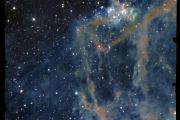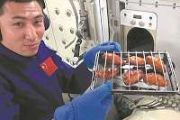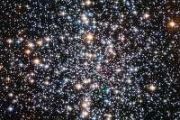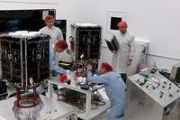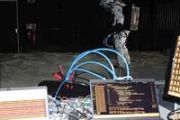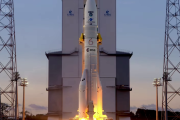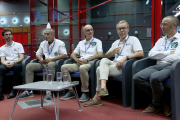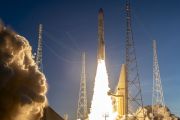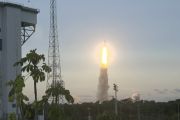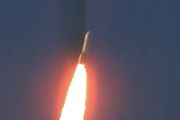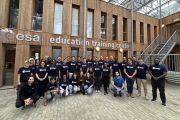
Copernical Team
BepiColombo reveals Mercury in a new light
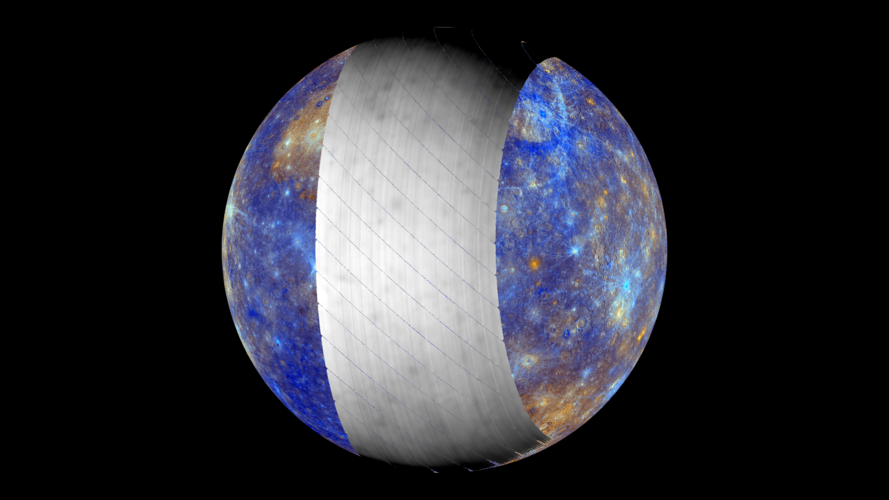
On 1 December 2024, BepiColombo flew past Mercury for the fifth time. During this flyby, BepiColombo became the first spacecraft ever to observe Mercury in mid-infrared light. The new images reveal variations in temperature and composition across the planet's cratered surface.
Silver Journeys – Ariane 6 woodcut poster
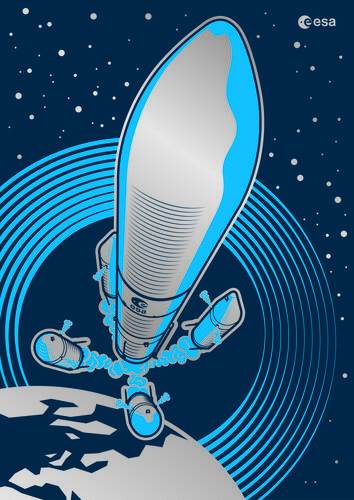 Image:
Silver Journeys – Ariane 6 woodcut poster
Image:
Silver Journeys – Ariane 6 woodcut poster Silver Journeys – Vega-C woodcut poster
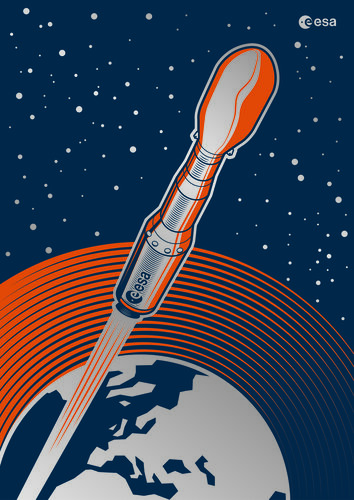 Image:
Silver Journeys – Vega-C woodcut poster
Image:
Silver Journeys – Vega-C woodcut poster Silver Journeys – Space Rider woodcut poster
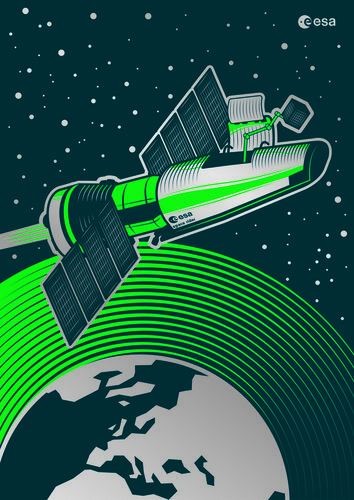 Image:
Silver Journeys – Space Rider woodcut poster
Image:
Silver Journeys – Space Rider woodcut poster UK methane leak spotted using satellites

Researchers from the University of Leeds have detected methane leaking from a faulty pipe in Cheltenham, Gloucestershire, UK, using GHGSat satellite data – part of ESA’s Third Party Mission Programme. This marks the first time a UK methane emission has been identified from space and successfully mitigated.
Researchers use citizen scientist data to explore blue auroras in Japan
 On May 11, 2024, a dramatic geomagnetic storm created colorful auroras across Japan's Honshu and Hokkaido islands. Among these was a unique salmon-pink aurora lasting through the night and an exceptionally rare, blue-dominant aurora observed just before midnight. Unlike the typical red auroras seen at low latitudes, these unusual displays captivated citizen scientists and researchers alike.
On May 11, 2024, a dramatic geomagnetic storm created colorful auroras across Japan's Honshu and Hokkaido islands. Among these was a unique salmon-pink aurora lasting through the night and an exceptionally rare, blue-dominant aurora observed just before midnight. Unlike the typical red auroras seen at low latitudes, these unusual displays captivated citizen scientists and researchers alike. Europe's most advanced weather satellite begins operations
 EUMETSAT's Meteosat Third Generation (MTG) satellite, now renamed Meteosat-12, has officially become operational. Equipped with cutting-edge instruments, this satellite is poised to transform weather forecasting and climate monitoring.
The satellite's two primary instruments, the Flexible Combined Imager (FCI) and the Lightning Imager (LI), are key to its capabilities. These tools enable m
EUMETSAT's Meteosat Third Generation (MTG) satellite, now renamed Meteosat-12, has officially become operational. Equipped with cutting-edge instruments, this satellite is poised to transform weather forecasting and climate monitoring.
The satellite's two primary instruments, the Flexible Combined Imager (FCI) and the Lightning Imager (LI), are key to its capabilities. These tools enable m NASA C20A aircraft supports disaster science and fire studies
 In an era of increasing extreme weather events and natural disasters, NASA's C-20A aircraft is playing a vital role in collecting data to improve disaster response and prediction efforts. Operated from NASA's Armstrong Flight Research Center in California, this modified Gulfstream III business jet supports various Earth science research missions.
In October, the C-20A was deployed to study
In an era of increasing extreme weather events and natural disasters, NASA's C-20A aircraft is playing a vital role in collecting data to improve disaster response and prediction efforts. Operated from NASA's Armstrong Flight Research Center in California, this modified Gulfstream III business jet supports various Earth science research missions.
In October, the C-20A was deployed to study MINE-THE-GAP project to transform mining oversight with AI and satellite data
 As the demand for raw materials surges to support digitalization and decarbonization, the MINE-THE-GAP project has been launched to address a pressing gap in understanding the environmental and social impacts of mining. This initiative leverages satellite technology and artificial intelligence (AI) to create reliable and scalable mining indicators.
Currently, mining operations, even in reg
As the demand for raw materials surges to support digitalization and decarbonization, the MINE-THE-GAP project has been launched to address a pressing gap in understanding the environmental and social impacts of mining. This initiative leverages satellite technology and artificial intelligence (AI) to create reliable and scalable mining indicators.
Currently, mining operations, even in reg Expanded AI Model with Global Data Enhances Earth Science Applications
 NASA, IBM, and Forschungszentrum Julich have released an expanded version of the open-source Prithvi Geospatial artificial intelligence (AI) foundation model to support a broader range of geographical applications. Now, with the inclusion of global data, the foundation model can support tracking changes in land use, monitoring disasters, and predicting crop yields worldwide.
The Prithvi Ge
NASA, IBM, and Forschungszentrum Julich have released an expanded version of the open-source Prithvi Geospatial artificial intelligence (AI) foundation model to support a broader range of geographical applications. Now, with the inclusion of global data, the foundation model can support tracking changes in land use, monitoring disasters, and predicting crop yields worldwide.
The Prithvi Ge 








